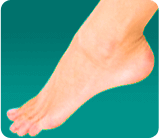Autumn Skin Revival
 Did you know that sunshine is the biggest factor in premature skin aging? During the summer, the sun is closer to the earth and more of your skin is exposed to damaging UVA rays that age your skin. Although skin damage due to sun exposure is often invisible until much later—resulting in hyperpigmentation, wrinkles and thickened skin long after you’ve quit your sun-worshipping ways— many patients are cautious and want to preemptively address any damage cause during their time having fun in the sun throughout the past season.
Did you know that sunshine is the biggest factor in premature skin aging? During the summer, the sun is closer to the earth and more of your skin is exposed to damaging UVA rays that age your skin. Although skin damage due to sun exposure is often invisible until much later—resulting in hyperpigmentation, wrinkles and thickened skin long after you’ve quit your sun-worshipping ways— many patients are cautious and want to preemptively address any damage cause during their time having fun in the sun throughout the past season.
If you’re wondering what you can do to help your skin recover, here are some answers!
Combat Summer Skin From the Inside Out
Your skin is an organ—as a matter of fact, it’s your largest organ. To that end, eating foods that are rich in antioxidants can help you in your fight against premature skin aging. If you aren’t certain which foods are highest in antioxidants, click this link for details. PS: One of them is chocolate!
Dehydration is another factor in premature skin aging. By the time you feel your first hint of thirst, your body is already dehydrated. Remember the old adage about drinking eight 8-oz. glasses of water a day? Well, it’s true! Your body needs lots of water to replenish your cells and flush out toxins. And, no, coffee, tea and sodas don’t replace the water you need to drink. Hate drinking water? Add lemons or other fruits for a tastier experience—whatever it takes, get that water into your thirsty cells! Your face will thank you and so will your brain and other organs!
Speaking of dehydration, certain lifestyle habits contribute to dehydration, such as smoking and drinking too much caffeine and alcohol. Something to think about, right?
Combat Summer Skin From the Outside In
While most of us understand that serums and creams help our skin look more youthful and hydrated, the truth is, most of them never penetrate the outside layer of your skin, called the dermis. There are several reasons for this:
- Most creams and serums are “stuck” on the surface of your skin due to the presence of old skin cells that “block” the way.
- Most creams and serums — even the ones with hyaluronic acid and other skin goodies — contain molecules that can’t penetrate the dermis because they’re simply too large. Imagine trying to fit a golf ball into a thimble and you get the idea. No matter what the manufacturers tell you about their fabulous ingredients, if those ingredients can’t get past the first layer of skin, you won’t see the results you’re hoping for.
Treatments That Work for Summer-Dry Skin
So, if creams and serums get stuck on the surface of your skin due to the presence of old skin cells, how can you fix that? The best method to remove old skin cells is exfoliation, and you need to do it daily and also have a professional exfoliation treatment every month or so for a more thorough removal of dead skin cells. You’ll be amazed how your skin will drink up your serums and lotions after you get rid of those tired old skin cells!
How to Exfoliate Your Skin at Home
Cleopatra didn’t have access to a high-tech array of high-tech ingredients to give her the beautiful skin for which she was famous. How did she do it? According to legend, she was big on milk baths! Why did milk give Cleo beautiful, radiant, soft skin? Well, milk contains lactic acid, which is one of the acids used in chemical peels. Lactic acid acts as a chemical agent on the skin to remove old, dead skin cells to reveal the younger skin cells hiding beneath the old ones!
How A Chemical Peel Exfoliates Skin
A chemical peel is an exfoliation method that penetrates deeper into your skin layers than you can accomplish at home. A light peel will eliminate dead skin build-up to allow your serums and moisturizers get into the skin. A deeper peel will not only remove surface dead skin cells but treat superficial wrinkles as well. Both light and deeper peels require recovery time: the light peel recovery is only a few days and the deeper peels require a week or longer, depending upon the depth.
Nothing Beats Prevention
You now know several things you can do to try and “undo” some of the damage from UVA exposure throughout the summer – but don’t forget, the best approach is always prevention! Don’t forget to wear sunscreen – even when you don’t think the sun seems “too strong” – and make sure to re-apply as frequently as the instructions state. Your skin will thank you long into the future!




